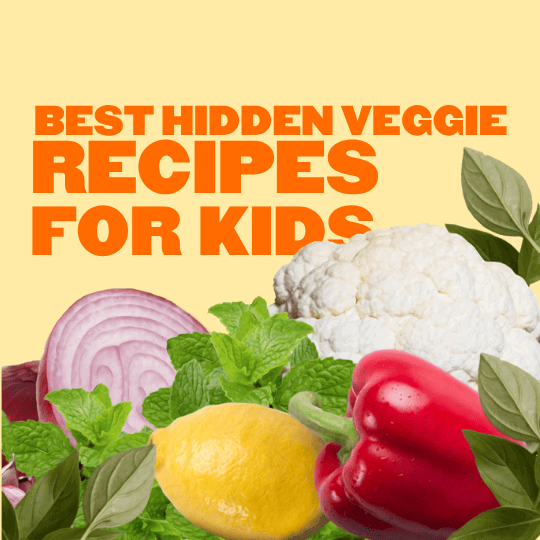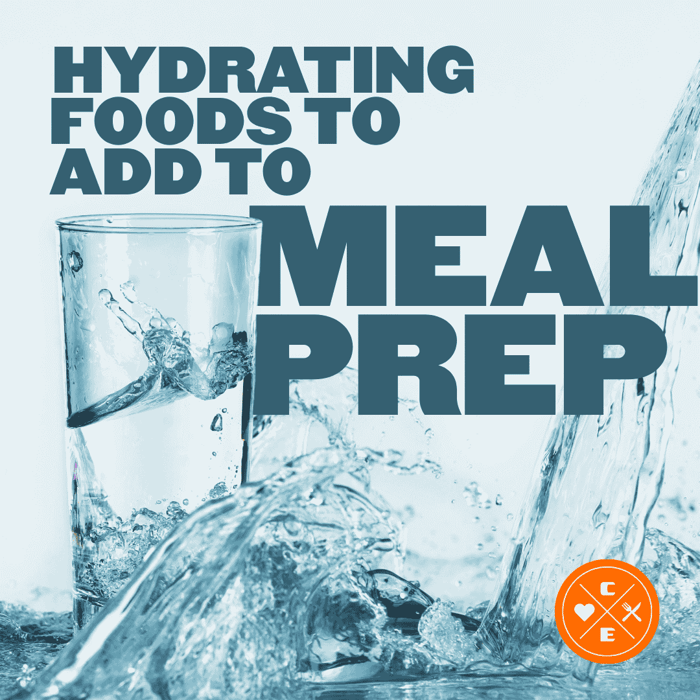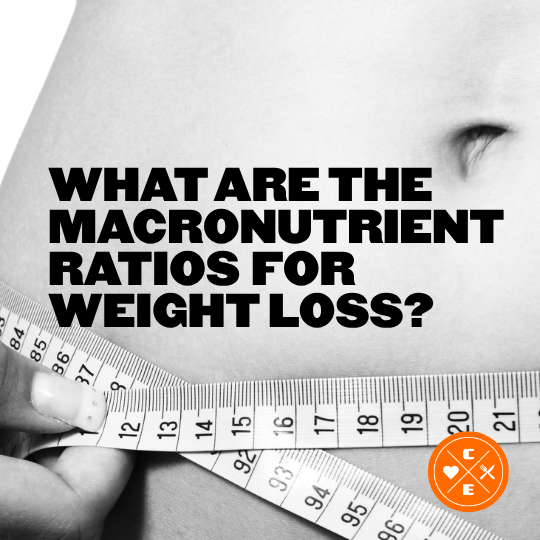
Best Hidden Veggie Recipes for Kids
Jason Nista
Nutrition
|
Healthy Lifestyle
22 minute read
Table of Contents
- Hidden Veggie Recipes Kids Will Love!
- 1. Mac and Cheese with Hidden Vegetables
- 2. Sweet Potato Chicken Nuggets
- 3. Muffins and Baked Goods with Hidden Vegetables
- 4. Meatballs and Fritters with Hidden Vegetables
- 5. Smoothies and Sauces with Blended Vegetables
- Recipe Comparison: Choosing the Right Hidden Veggie Meals
- Making Family Meals Healthier and Simpler
- FAQs
- FAQs
Getting kids to eat vegetables can be tough, but hidden veggie recipes make it easier. These recipes sneak vegetables into meals kids already love, like mac and cheese, chicken nuggets, and muffins, ensuring they get nutrients without complaints.
Key takeaways:
- Mac and Cheese: Blend mild veggies like cauliflower or sweet potatoes into the cheese sauce.
- Chicken Nuggets: Add mashed sweet potatoes to ground chicken for extra vitamins and moisture.
- Muffins: Use grated zucchini, carrots, or pureed spinach for nutrient-packed baked goods.
- Meatballs: Mix grated veggies like zucchini or carrots into ground meat for easy, veggie-rich meals.
- Smoothies & Sauces: Blend spinach, cauliflower, or carrots into smoothies or pasta sauces for a seamless nutrient boost.
These recipes are simple to prepare, store well, and help picky eaters enjoy vegetables without realizing it.
Hidden Veggie Recipes Kids Will Love!
1. Mac and Cheese with Hidden Vegetables
Mac and cheese is a classic favorite among kids, making it an excellent way to sneak in some extra veggies. By blending vegetables directly into the cheese sauce, you can pack in more nutrients while keeping the taste and texture kids love.
Why Kids Don’t Notice the Veggies
The trick is choosing the right vegetables and preparing them the right way. Mild-flavored options like cauliflower, sweet potatoes, butternut squash, and carrots work best. When steamed and pureed until silky smooth, these veggies blend seamlessly into the cheese sauce, keeping the familiar flavor and color intact.
To ensure the dish still tastes like the mac and cheese kids know and love, extra sharp cheddar cheese is key. Its bold flavor masks any hint of vegetables, so even the pickiest eaters won’t suspect a thing.
How to Make It
This recipe is simple but requires a little care to get that creamy, veggie-packed sauce just right. Jean Choi, a recipe developer from What Great Grandma Ate, shares her approach:
"I'm always trying to find ways to sneak in more veggies for my toddler... Mac and cheese has been her favorite thing to eat lately, so I had this great idea to make it for her with blended vegetables."
Her recipe uses 2 cups of cauliflower florets and 1 cup of cubed sweet potatoes. Here's how to do it:
- Steam the cauliflower and sweet potatoes for 8-10 minutes until they’re super soft.
- Blend the cooked vegetables with 1/2 cup of milk until completely smooth.
- Mix this veggie puree into a cheese sauce made with ghee, arrowroot starch, milk, and extra sharp cheddar cheese.
For an extra boost, you can use gluten-free chickpea pasta to add more protein, making it a great option for families with dietary restrictions.
Want a deeper flavor? Roasting the vegetables before blending - especially butternut squash and carrots - brings out their natural sweetness and adds a subtle richness to the dish.
Storage and Reheating Tips
This hidden veggie mac and cheese is perfect for meal prep. Store leftovers in an airtight container in the fridge for up to 4 days or freeze for as long as 2 months. When reheating, follow these tips to keep the texture creamy:
- On the stovetop: Warm over medium-low heat, adding 2-3 tablespoons of milk per cup to loosen the sauce.
- In the microwave: Heat in 30-second intervals, stirring in between.
If reheating from frozen, let it thaw in the fridge overnight first. Adding a little extra shredded cheese during reheating can bring back that fresh, cheesy flavor.
This simple twist on a comfort food classic turns mac and cheese into a secretly nutritious meal. Kids will happily ask for seconds, completely unaware they’re eating their veggies!
2. Sweet Potato Chicken Nuggets
Take your chicken nuggets to the next level by blending mashed sweet potato with ground chicken. This simple addition brings moisture, a hint of natural sweetness, and a boost of vitamins.
Why This Recipe Works
Sweet potato is a fantastic ingredient for chicken nuggets. It adds just the right amount of sweetness and moisture without overpowering the chicken's flavor. Plus, sweet potatoes are packed with beta-carotene, which the body converts into Vitamin A - a nutrient essential for eye health and overall development. Using ground chicken makes the mixing and shaping process straightforward, while the mashed sweet potato helps keep the nuggets tender and flavorful.
Home cooks often rave about this recipe's kid-friendly texture and the ability to tweak spices and salt to taste. Want crunchier nuggets? Try panko breadcrumbs. Prefer something softer for toddlers? Regular breadcrumbs work great.
Baking the nuggets instead of frying makes this recipe a healthier alternative. Follow these preparation and storage tips to get the best results every time.
Preparation and Storage Tips
Cooking sweet potatoes is easy, and there are several methods to choose from. A medium sweet potato yields about 1.5 cups of mashed potato, which is just right for most nugget recipes. You can roast, steam, slow-cook, or microwave the sweet potato. For a quick option, peel and cube it, then microwave in water for 3–4 minutes until soft.
When shaping the nuggets, keep your hands moist with cold water to prevent sticking. Bake them at 375–400°F for 20–25 minutes, flipping halfway through to ensure even browning and a perfect texture.
For storage, these nuggets are a meal prep dream. Refrigerate leftovers in an airtight container for 3–5 days, or freeze them for up to 6 months. To freeze, let the nuggets cool completely, then place them in a single layer on a tray before transferring them to a freezer bag or container. This step keeps them from clumping together.
Reheating is simple and can be done in different ways:
- Oven: Warm refrigerated nuggets for 5–8 minutes at 350–400°F, or frozen ones for 7–10 minutes. This keeps them crispy.
- Air Fryer: Reheat refrigerated nuggets at 375°F for about 4 minutes for extra crunch.
- Microwave: Heat for 15–30 seconds. While this method makes the nuggets softer, it’s a great option for babies and toddlers.
Serve these nuggets with your favorite dips like ketchup, honey mustard, or sweet and sour sauce. Pair them with rice, veggies, or fruit for a well-rounded meal.
These sweet potato chicken nuggets are a quick, nutritious option that busy families will love. Perfect for kids and adults alike, they’re a delicious way to sneak some extra veggies into your day.
3. Muffins and Baked Goods with Hidden Vegetables
Baked goods can be a sneaky yet effective way to add vegetables into your child’s diet. Muffins, in particular, are perfect for blending in grated zucchini, pureed spinach, or shredded carrots. These ingredients not only offer essential nutrients but also mix seamlessly into batters, ensuring the flavor kids love stays intact. The trick? Pairing the right vegetables with familiar, kid-approved flavors. Below are some standout muffin recipes that make hidden veggies a delicious secret.
Best Recipe Options
Chocolate is a fantastic base for hiding vegetables. Nutrition expert Sara Goldstein explains that avocado blends perfectly into chocolate muffins, enhancing their texture without altering the taste.
Other great options include zucchini vanilla muffins - where pureed zucchini practically disappears into the batter - and sweet potato banana chocolate chip muffins, which use baked sweet potato to naturally sweeten the mix while cutting down on added sugar.
Super Healthy Kids recommends finely chopping vegetables like broccoli, zucchini, or carrots and mixing them into batters with chocolate or warm cinnamon spices.
Parents have also shared their success with these recipes. For example, Andrea Aoun reported that her chocolate veggie muffins were so moist and chocolatey, even her picky eater couldn’t resist them. Similarly, in August 2024, Celeste shared that her 6-year-old autistic son loves chocolate chip veggie muffins so much he sometimes eats two in one sitting.
These recipes prove that with the right approach, hidden vegetables can be a hit.
Flavor Combinations That Work
The secret to successful veggie-packed baked goods lies in pairing mild vegetables with bold, familiar flavors. Chocolate, cinnamon, and vanilla are excellent choices for masking vegetable flavors.
"These are amazing! I made a few substitutions and they turned out sooooo good...And I added a little cinnamon to the dry ingredients."
– Dom, Eat Well with Lex user
Banana-based recipes are another excellent option. Ripe bananas naturally sweeten the batter and effectively mask other flavors. Plus, they reduce the need for extra sugar.
Warm spices like cinnamon and nutmeg pair beautifully with root vegetables like carrots and sweet potatoes, creating comforting, dessert-like flavors that kids associate with their favorite treats.
Preparation is just as important as flavor pairing. Pureeing or finely chopping vegetables ensures they blend seamlessly into the batter, making them virtually undetectable. This attention to detail can turn a skeptical child into a fan.
The results speak for themselves. In September 2024, Eat Well with Lex user Kylie shared that her daughter - who rarely eats vegetables - devoured veggie chocolate muffins without hesitation. Kylie also noted that the muffins stayed moist and stored well in an airtight container.
"I'm so excited to share with you one of my favorite recipes for adding veggies into your little one's diet: Veggie Chocolate Muffins. Yes, you heard that right – chocolate muffins packed with hidden veggies! But trust me, these muffins are so delicious, your kids won't even suspect there's anything healthy inside."
– Eat Well with Lex
With the right techniques and flavor combinations, veggie-packed muffins can make healthy eating easy and enjoyable for both kids and parents. These treats satisfy a sweet tooth while delivering a hidden boost of nutrition.
sbb-itb-1989a25
4. Meatballs and Fritters with Hidden Vegetables
Ground meat dishes are an easy way to sneak extra vegetables into your child's meals. By finely chopping or grating veggies and mixing them into ground meat, you can make them almost invisible to even the pickiest eaters. The key is processing the vegetables finely enough so they blend seamlessly into the dish.
Recipe Ideas
Turkey meatballs with hidden vegetables are a favorite among parents. Turkey's mild flavor works perfectly with grated zucchini and carrots, two vegetables that are soft, subtle in taste, and easy to incorporate.
Amy Palanjian from Yummy Toddler Food highlights the importance of consistency when preparing these dishes:
"Grind the veggies up before you add the rest of the ingredients to make sure they are all uniform in size. This is key. You're aiming for the veggies to have a similar consistency as the ground meat."
Getting the proportions right is also important. For example, a common recipe might use 1/2 cup each of shredded carrot and zucchini or one medium zucchini and one medium carrot for 24 turkey meatballs. This ensures enough vegetables are included without overpowering the meat.
Vegetable fritters are another great option. Zucchini fritters, for instance, combine grated zucchini with hidden carrots to create a crispy, kid-approved dish. Zucchini's natural moisture helps bind the ingredients, but it's essential to squeeze out the excess liquid to keep the texture just right.
Adding fresh herbs like parsley or chives can also enhance the flavor and give the dish a pop of color that appeals to kids.
Best Cooking Methods
Once your vegetable-packed meatballs or fritters are ready, choosing the right cooking method is crucial to maintain their nutrition and texture. Baking and air frying are both excellent options for creating kid-friendly textures.
- Baking: Preheat your oven to 350°F (175°C) and bake the meatballs for 20–30 minutes. This method ensures the vegetables cook through while giving the meatballs a golden-brown exterior.
- Air Frying: For an extra crispy finish, place the meatballs in a single layer in the air fryer at 350°F (175°C) for 5–7 minutes.
If you’re simmering the meatballs in a sauce, this method works especially well for harder vegetables like carrots. The extended cooking time in the liquid helps soften the veggies, making them even less noticeable. As The Toasted Pine Nut explains:
"Simmering the meatballs in the marinara for the 15 minutes really helps the carrots cook through... Simmering the meatballs in the marinara softens the hidden veggies and makes the less detectable!"
Storage and Reheating Tips
Proper storage is essential to keep these meals fresh. Cooked meatballs can be refrigerated for 3–4 days or frozen for up to 3–4 months. For freezing, arrange the meatballs on a baking sheet first, then transfer them to freezer bags to prevent sticking. When reheating, make sure the internal temperature reaches 165°F (74°C) to ensure food safety.
Whether baked, air-fried, or simmered, these methods help retain the nutritional benefits of the hidden vegetables while delivering the textures kids love. The result? A protein-packed meal that sneaks in multiple servings of veggies - no complaints required!
5. Smoothies and Sauces with Blended Vegetables
Blending vegetables into smoothies and pasta sauces is a clever way to sneak in extra nutrients, especially for kids who might shy away from anything green or chunky. The smooth textures of these dishes make it easy to disguise the veggies, keeping meals both nutritious and kid-approved.
Smoothie Recipes Kids Will Enjoy
To create kid-friendly smoothies, start with mild vegetables and naturally sweet fruits. Baby spinach is a fantastic choice for beginners. Frances Largeman-Roth, RDN, Nutrition Expert and Author of Smoothies & Juices, explains:
"The best veggie to add to your smoothie, without even noticing it, is baby spinach... Baby spinach is very tender and doesn't have a strong flavor, so it works very well in smoothies."
Spinach not only blends effortlessly but also provides phytonutrients, antioxidants, and prebiotic fiber.
Another excellent option is frozen cauliflower, which adds creaminess without overpowering the flavor. According to Largeman-Roth:
"Frozen cauliflower may sound like an odd addition, but it's actually great... Frozen cauliflower is a bit milder than fresh and blends easily into any type of smoothie, though you do want to have some naturally sweet fruit in the mix, like a banana, berries, or juice."
Frozen cauliflower also brings antioxidants and anti-inflammatory compounds to the table.
Zucchini is another stealthy addition. Its mild flavor and high water content make it an ideal ingredient for smoothies, as Largeman-Roth notes:
"It [zucchini] has such a mild flavor that you likely won't even notice it's there... because zucchini has a high water content, it adds additional moisture to your smoothie."
Low in calories and packed with fiber, zucchini adds volume without extra sweetness or calories.
Cucumbers are another great option, offering a refreshing, hydrating boost thanks to their high water content and subtle flavor.
For best results, start with small amounts of vegetables and gradually increase over time. Pairing veggies with sweet fruits and frozen ingredients helps create smoothies that kids will happily drink .
Much like smoothies, pasta sauces can be a great vehicle for hidden vegetables, making them a versatile option for boosting nutrition.
Pasta Sauces with a Nutritional Boost
Blending vegetables into pasta sauces is another way to add nutrients while keeping picky eaters happy. By pureeing the vegetables into a smooth consistency, you can make the sauce more appealing while enhancing its flavor.
A great combination for a hidden veggie sauce includes carrots, bell peppers, and zucchini. These vegetables blend seamlessly into tomato-based sauces, with the natural sweetness of carrots - and even sweet potatoes, if desired - helping to balance the acidity of tomatoes.
The secret to a perfect veggie-packed sauce lies in the blending process. Use a blender or immersion blender to achieve a silky texture. You can adjust the thickness by adding a splash of water or letting the sauce simmer longer.
For a deeper, sweeter flavor, try roasting the vegetables before blending. For instance, a recipe from What Great Grandma Ate suggests roasting cherry tomatoes, onion, carrots, red bell pepper, zucchini, garlic, and feta cheese to enhance their natural sweetness before pureeing.
Adding a touch of creaminess can elevate the sauce further. The Modern Nonna recommends a splash of heavy cream or coconut cream for a smooth, rich texture that keeps the vegetable flavors subtle.
Getting kids involved in the cooking process can also make them more excited to try the dish. Yummy Toddler Food suggests letting children help wash vegetables or stir the pot, which can encourage them to taste the final product.
These versatile sauces can also double as a pizza base or a substitute for canned tomatoes. The Natural Nurturer highlights how these "sneaky veggie" sauces can introduce kids to more vegetables in a gentle way.
To round out the flavor, season with Italian herbs, garlic, and salt. A touch of fresh basil, balsamic vinegar, or even a pinch of sugar can help balance the tomato's acidity.
Whether you're blending up a refreshing morning smoothie or preparing a hearty pasta dinner, these hidden veggie recipes are a simple way to boost nutrition without sparking a mealtime standoff.
Recipe Comparison: Choosing the Right Hidden Veggie Meals
When deciding on the best hidden veggie recipes for your family, there are a few things to keep in mind: preparation time, how well kids will accept the dish, its nutritional value, and whether it’s suitable for meal prep. Some recipes can be whipped up in just 20–25 minutes, making them perfect for hectic weeknight dinners. These practical tips build on the guidance provided in the recipes above.
The flavor of each recipe plays a big role in how well it’s received by kids. Sweet vegetables like butternut squash and carrots tend to be more popular with children than bitter ones like broccoli and spinach. Dishes featuring naturally sweet veggies often have a higher chance of winning over picky eaters. For example, mac and cheese made with pureed cauliflower is a hit because the familiar flavor masks the veggie taste.
The nutritional boost from hidden veggie recipes depends on how much vegetable content is included per serving. Some recipes may only sneak in small amounts of veggies, meaning they don’t significantly increase overall vegetable intake. Take a chocolate muffin recipe with 2 cups of beet puree, for instance. Even if a child eats three mini muffins, they’re still not getting close to a full serving of vegetables. That said, replacing high-calorie ingredients with pureed vegetables can add nutrients while cutting calories. Ultimately, these recipes work best as a supplement to, not a replacement for, whole vegetables in your child’s diet.
Certain hidden veggie meals, like meatballs and fritters, are great for batch cooking and freeze well. Muffins can also be stored for several days or frozen for up to three months. If time is tight, using frozen or pre-prepared vegetables can make cooking even quicker.
To keep meals interesting and nutritious, try rotating between different types of hidden veggie recipes. Smoothies, baked goods, and main dishes all offer unique ways to incorporate vegetables, and mixing them up can provide more variety than sticking to just one type of dish.
Introducing new vegetables gradually is often the key to long-term success. Kids might need to see or taste a new fruit or vegetable 10 or more times before they’re willing to eat it. Starting with recipes that feature naturally sweet vegetables - like sweet potato-based dishes or fruit-heavy smoothies with a touch of mild greens - can create positive first impressions. Once kids are comfortable, you can slowly introduce dishes with stronger vegetable flavors or more visible veggies.
Making Family Meals Healthier and Simpler
Hidden veggie recipes are a clever way to make mealtime healthier while keeping kids happy. By sneaking vegetables into dishes they already love, parents can ensure their children get important nutrients without the usual dinnertime battles. It's a win-win: kids eat better, and parents stress less.
The trick to pulling this off lies in smart meal prep that fits your family's routine and tastes. Instead of blending everything into “mystery meals” that picky eaters might reject, consider prepping meal components separately. For instance, roast chicken breasts alongside vegetables like bell peppers, zucchini, and carrots, then store each item in individual containers. Throughout the week, you can mix and match these ingredients to create meals everyone enjoys without the guesswork. This approach also opens the door to involving kids in the kitchen.
Getting kids involved in meal prep can make a huge difference. When children help wash veggies, measure ingredients, or stir sauces, they feel more connected to the meal. This sense of ownership often makes them more willing to try new foods. Hidden veggie recipes work particularly well here - kids can join in on the “sneaky” process, turning it into a fun activity rather than a chore.
"Pairing familiar foods with new or less favored veggies can help kids feel more comfortable and make them more likely to try the new veggies." - Dahlia Rimmon, MS RDN, Pediatric Dietitian
How you present the food matters, too. Cutting vegetables into fun shapes with cookie cutters or using a spiralizer can make meals visually appealing, even if some of the veggies are hidden. Arranging colorful ingredients in an eye-catching way can also increase the chances of kids giving them a try.
For those especially hectic days, professional meal options can be a lifesaver. Clean Eatz Kitchen offers chef-prepared, portion-controlled frozen meals that are ready to heat and serve. Starting at $49.99 for weight loss plans and $53.95 for customizable options, these meals provide a convenient backup when there’s no time for detailed prep. They’re a practical way to keep your family eating well without sacrificing convenience.
Finally, a little advance prep goes a long way. Chopping vegetables, batch cooking grains, or assembling freezer meals ahead of time makes it easier to stick to hidden veggie recipes, even during your busiest weeks. With these strategies, you can keep family meals both nutritious and low-stress.
FAQs
What are some easy ways to ensure my child eats enough vegetables when they don’t like them?
You can work veggies into your child’s favorite meals without them even noticing. Try blending or finely chopping vegetables into dishes like pasta sauces, soups, or smoothies. For instance, mix pureed carrots into spaghetti sauce or toss a handful of spinach into a fruit smoothie - it’ll blend right in!
Another idea? Get your kids involved in the kitchen. Let them help whip up veggie-filled recipes, like zucchini muffins or cauliflower mac and cheese. When they’re part of the process, they’re often more excited to taste what they’ve made. You can also make veggies more fun by cutting them into playful shapes or serving them with dips like ranch or hummus.
The trick is to stay consistent. Keep offering veggies in creative ways, and don’t forget to set the example by enjoying them yourself!
How can I sneak vegetables into meals for picky eaters without them noticing?
One clever way to sneak vegetables into meals is by blending or pureeing them into dishes like sauces, soups, or smoothies. This makes them practically invisible. For instance, you can mix pureed carrots or spinach into pasta sauce or blend cauliflower into mashed potatoes without anyone noticing.
Another approach is to work vegetables into popular kid-friendly meals. Think mac and cheese, burgers, or even baked treats like muffins. You can also finely shred or dice veggies to add them to dishes like meatballs or casseroles without altering the texture too much.
Getting kids involved in the kitchen is another great tactic. When children help prepare meals, they’re often more curious about the food and more likely to taste and enjoy what they’ve helped create!
Are there any downsides to using hidden veggie recipes for kids?
While sneaking vegetables into meals can be a smart way to increase your child's nutrient intake, relying solely on this tactic has its downsides. It may prevent your child from learning to recognize and appreciate vegetables in their natural state - an essential step in fostering lifelong healthy eating habits.
Another potential issue is the risk of creating distrust around food. If your child discovers hidden ingredients, it could lead to unnecessary stress at mealtimes. A more balanced approach might involve combining hidden veggie recipes with chances for your child to try visible vegetables in a fun, positive environment. This can gradually help them feel more at ease with a variety of foods.
Related Articles
Hydrating Foods to Add to Meal Prep
29 minute read
Best Foods for Post-Workout Recovery
31 minute read
What Are Macronutrient Ratios for Weight Loss?
16 minute read



